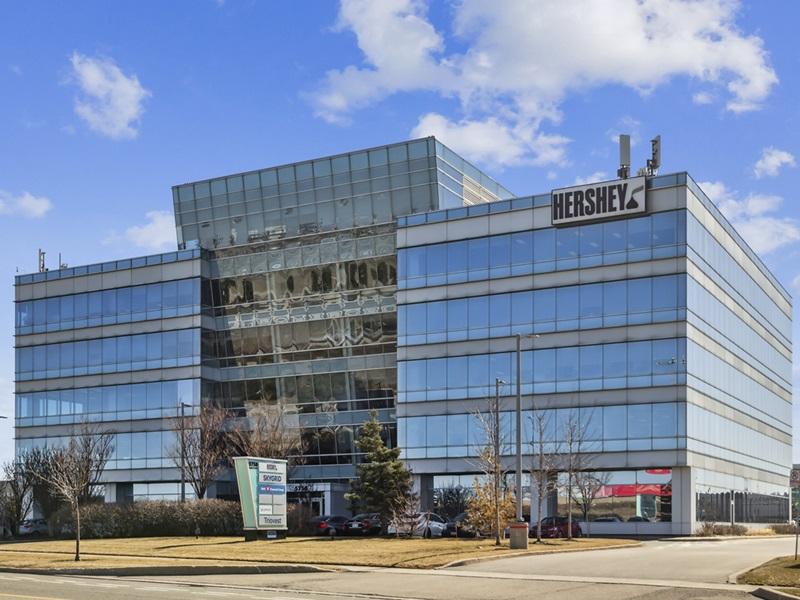
To better position a pair of 50-year-old downtown Toronto apartment towers in the rental market, Epic Investment Services oversaw an extensive retrofit to provide major building upgrades and make the aging towers more environmentally friendly.
And thanks to a careful planning process, it completed the work without forcing any of the existing residents into permanent moves.
The 17-storey 191 Sherbourne St. and 23-storey 201 Sherbourne are collectively known as Sherbourne Estates and have a combined 596 units.
The concrete buildings were showing visible signs of age but, instead of undertaking a standard surface restoration, it was decided to opt for a deep retrofit that included building system replacement as well as exterior and interior repairs.
“Building age, obtaining sustainability and ESG objectives, improving the quality of the accommodation for our residents, and a long-term (investment) hold really meant that we had to take a deeper retrofit perspective,” Epic senior vice-president of asset management Tony Maduri told RENX.
Work began in March 2020 and was just recently completed.
Epic assembled and led a team composed of: project leader and manager Colliers Project Leaders; general contractor Buttcon; Zeidler Architecture; property manager MetCap Living; and engineering consultant Smith + Andersen, which was involved with upgrading the mechanical and electrical systems.
“A construction management contract is always the best approach in dealing with an older building where you may have unforeseen building conditions,” Maduri said. “It gives us the flexibility to work with what may come up as a team, so that was a decision that we made early in the process.”
Retrofit components
The major mechanical systems were replaced to improve air circulation. New electrical systems were put in place and natural gas was converted to electrical heating and cooling. This is projected to reduce energy use by 22 per cent and greenhouse gas emissions by approximately 35 per cent.
Concrete restoration was done and balcony railings were replaced. A concrete crusher was used to minimize jackhammering and reduce noise and vibrations during the work.
The building re-cladding added insulation that improved its R-value by 42 per cent, resulting in an estimated energy savings of 5.4 per cent and greenhouse gas reduction of six per cent.
The interior unit work included the replacement of single-pane windows and balcony doors with more efficient double-glazed and double-pane versions, respectively. This improved both air circulation and distribution for greater comfort and thermal performance of the building.
Improvements were also made to the fitness centre and fibre-optic internet infrastructure.
A plan for existing residents
With the building 75 per cent occupied, a communications program was created to keep residents informed of the status of the project.
To ensure the project stayed on track while minimizing impact to the residents, the team created plans for moving 40 residents into fully furnished suites for two weeks at a time, on a temporary basis, while work was being completed in various areas of the buildings.
“With the extent of the retrofit, our objective was always to minimize the impact on residents. However, when the pandemic hit and with lockdowns, this resulted in more residents being in their home during the day than anticipated,” Maduri said. “To accommodate our residents, we moved quickly to create a large number of fully furnished suites, as part of a highly organized program, to temporarily move residents as we worked on their units.
"We also created other areas in the complex such as soundproof amenity rooms and a new fitness area with individual pods for our residents to utilize.”
The pandemic added to the challenges with the project, including supply chain disruptions, increased material costs, and the introduction and implementation of new safety protocols for tenants who were at home during working hours due to lockdowns.
“Notwithstanding the delays and the added complexities due to the pandemic, we had an incredible team that ensured we delivered on our financial and environmental objectives, while minimizing the impact on our residents.”
Maduri did not disclose the cost of the retrofit, but said it came in under budget despite the challenges.
Existing tenants remain protected by Ontario’s Residential Tenancies Act, which mandates the rent increase guideline for this year is 2.5 per cent.
Vacant units are subject to market rents, which will be higher now due to the improvements in the units themselves as well as with the buildings overall.
Rental apartments should be a priority
Toronto-headquartered Epic is a fully integrated real estate platform with more than $17.5 billion in assets under active management and more than 30 million square feet of space in office, retail, industrial and multi-family projects across Canada and the United States.
Its more than 200 employees provide investment, asset, development and property management services.
“We're not only involved in managing existing residential but we're also actively involved in the creation of new purpose-built rental product with our partners,” Maduri said, citing large developments in Mississauga and Vancouver.
An application has been made to add 15- and seven-storey apartment buildings with a combined 313 units to Sherbourne Estates to create what Maduri called “a larger, modern pedestrian-friendly housing community.”
Epic, however, won’t be involved with that development.
Maduri stressed the importance of maintaining existing rental buildings to a high standard while constructing new ones. He said purpose-built rentals represent just 10 per cent of housing starts, but 35 per cent of Greater Toronto Area households are renters. Eighty-eight per cent of the existing rental stock was built before 1980, Maduri added.
“The quality of that older housing stock is declining and reinvestment hasn't kept pace,” Maduri noted, which makes projects such as the Sherbourne retrofit even more important to the rental market.










